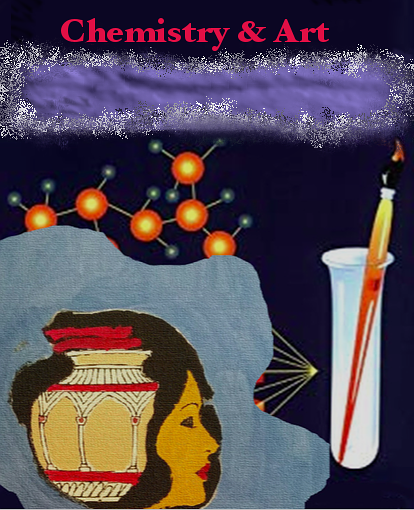Currently being painted with pozzolana acrylics.
Search This Blog
Saturday, December 29, 2018
Friday, December 28, 2018
"The Bouquet"/ Developmental
The work is being completed with pozzolana acrylics (developmental) and gouache (violet) which also is being developed.
Thursday, December 27, 2018
"The Olive Tree"/ Graphic Art
Currently being painted with pozzolina acrylics.
As Gauguin once said: "It can be whatever color the artist wants it to be."
As Gauguin once said: "It can be whatever color the artist wants it to be."
Mt. Vesuvius/ Pompeii/ Pozzolana (Meta-Kaolin) Clay
The soil around the Mountain is enriched in pozzolana clay- which I incorporate into my paint formulations.
Pozzolana Paint Formulations/ Roman Tradition
'Chalk Paint' is essentially gouache with acrylic/ vinyl binders making the dried surface insensitive to water.
Mt. Vesuvius ( Naples, Campania in Italy) erupted periodically for centuries providing 'pozzolana ' clay ( meta-kaolin) which the Romans used to make concreate.
Of course, as a chemist, I produce 'pozzolana' thermally at 600 deg.C for 2-3 hrs. Temperature and time are important , otherwise you will generate alumina.
I mix the meta-kaolin with commercial latex ( actually a misnomer; it has higher content of vinyls vs. acrylics) , dye or pigment and another additive (secret at this point). I also add some additional 'polyacrylic ester' to boost quality of the formulation.
Artists use the 'acrylic paints ' ( more expensive but longer-lasting painted surfaces) .
Furniture finishers often use chalk paints ( calcium carbonate or plaster of paris) to produce the distinctive matte coloration.
I am currently completing this artwork using my 'pozzolana paint' formulations. Brush flow, drying time are excellent.
Mt. Vesuvius ( Naples, Campania in Italy) erupted periodically for centuries providing 'pozzolana ' clay ( meta-kaolin) which the Romans used to make concreate.
Of course, as a chemist, I produce 'pozzolana' thermally at 600 deg.C for 2-3 hrs. Temperature and time are important , otherwise you will generate alumina.
I mix the meta-kaolin with commercial latex ( actually a misnomer; it has higher content of vinyls vs. acrylics) , dye or pigment and another additive (secret at this point). I also add some additional 'polyacrylic ester' to boost quality of the formulation.
Artists use the 'acrylic paints ' ( more expensive but longer-lasting painted surfaces) .
Furniture finishers often use chalk paints ( calcium carbonate or plaster of paris) to produce the distinctive matte coloration.
Wednesday, December 26, 2018
"Azo Paste/ Conversion Process to Azo Acrylic Paint
Bottom: Azo-paste dye via diazonium ion intermediate.
Tuesday, December 25, 2018
"Drawing Is Not The Problem: Seeing Is"
"Drawing Is Not The Problem: Seeing Is"- Betty Edwards ( from: Drawing On The Right Side of The Brain)
Monday, December 24, 2018
Subscribe to:
Posts (Atom)



























